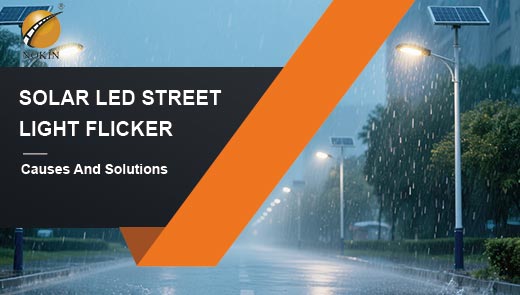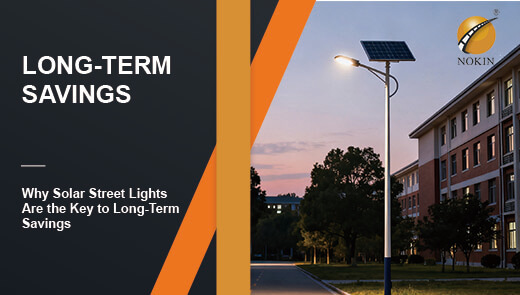Four Reasons for Choosing an All-in-one LED Solar Street Light
In the current global push for energy transition and green development, the outdoor lighting industry is also undergoing significant transformation. Traditional street lights rely on grid power, which not only consumes high energy, involves complex wiring, but also incurs high maintenance costs. In contrast, all-in-one LED solar street lights, with their innovative design and outstanding performance, have become the ideal choice for outdoor lighting. Below, we will delve into the four key reasons for choosing them.
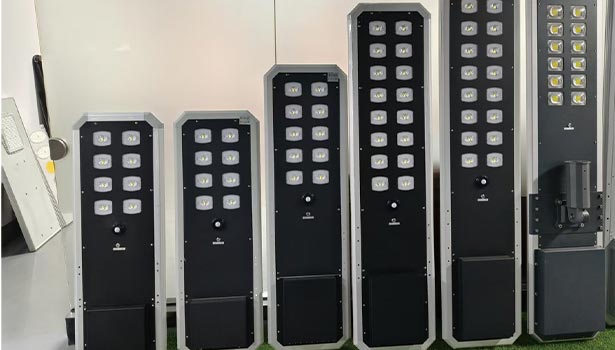
What is an All-in-One Solar Street Light?
All-in-one solar street lights revolutionize traditional design by integrating solar panels, batteries, controllers, and LED lamp heads into a compact unit. This not only results in a sleek and aesthetically pleasing appearance but also simplifies the lighting system architecture from the ground up. The solar panels typically use monocrystalline or polycrystalline silicon materials, achieving a photovoltaic conversion efficiency of 18% to 23%. Combined with intelligent controllers, they can precisely manage the charging and discharging process of the batteries, effectively extending their lifespan.
Compared to the complex component installation and extensive wiring work required for traditional separate solar street lights, integrated street lights are pre-wired at the factory. On-site installation only requires 1-2 people to secure them to the light pole, reducing installation time by 60%-70% and significantly lowering installation difficulty and labor costs.
Four Reasons to Choose All-in-One Solar Street Lights
Easy Installation
Integrated LED solar street lights offer significant advantages in various scenarios. In a mountainous rural area with complex terrain and high costs for grid installation, the construction team completed the installation of 10 kilometers of roads and 80 street lights in just 3 days using integrated LED solar street lights. If traditional street lights had been used, wiring alone would have taken a long time, with the overall installation period expected to exceed 15 days.
The installation process consists of three main steps: first, construct the lamp post foundation by pouring concrete at the selected location and leaving bolts for securing the lamp post; then erect and secure the lamp post; finally, install the integrated street light at the top of the lamp post and tighten the screws. No professional electricians are required for wiring; ordinary construction workers can operate the system after simple training. Labor costs are reduced by 50%–60% compared to traditional Street light installations, and the risk of project delays is minimized.
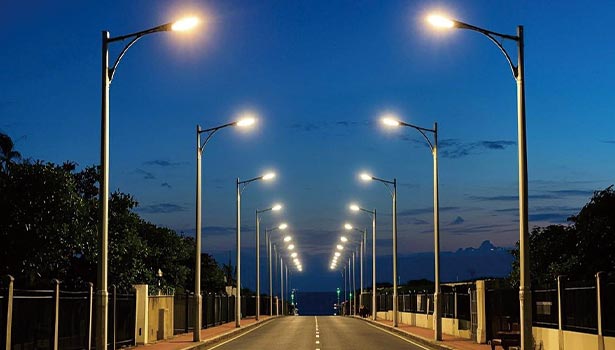
Wide Illumination Range
The lamp head design of the integrated LED solar Street light is highly innovative. By scientifically and uniformly arranging a large number of LED light beads and combining them with two independent LED chips, it achieves zone-based lighting functionality. This unique design not only avoids light overlap but also effectively eliminates lighting blind spots, ensuring a more comprehensive and evenly distributed light coverage area.
In terms of actual lighting performance, the lighting coverage area of a single integrated LED solar street light can reach 80–120 square meters, representing an over 50% increase compared to the 50–80 square meter coverage area of traditional high-pressure sodium lamp street lights. In terms of light uniformity, the integrated LED solar street light achieves a value of ≥0.7, while traditional high-pressure sodium lamp street lights only reach ≤0.5. The former provides a more comfortable, shadow-free lighting environment. Additionally, in terms of color rendering index, integrated LED solar street lights achieve a value of ≥80, far exceeding the ≤30 level of traditional high-pressure sodium lamp street lights. This enables more accurate reproduction of object colors, providing pedestrians with clearer visual information to discern road conditions and vehicles with safer driving conditions. This delivers a significantly superior nighttime lighting experience compared to traditional street lights.
High-brightness Design
Brightness and battery life are critical metrics for Street lights. Integrated LED solar Street lights utilize high-power solar panels combined with large-capacity batteries. Lithium iron phosphate batteries offer significant advantages over traditional lead-acid batteries:
|
Battery Type |
Capacity (Wh) |
Cycle Life (Times) |
Operating Temperature Range (°C) |
Energy Density (Wh/kg) |
|
LiFePO₄ Battery |
960 |
2000 - 3000 |
-40 to 70 |
110 - 160 |
|
Lead-Acid Battery |
Same Spec |
300 - 500 |
-20 to 50 |
30 - 50 |
Lithium iron phosphate batteries have a cycle life that is 4 to 6 times longer than lead-acid batteries, with a wide operating temperature range and high energy density. In practical use, even during continuous 3–5 days of rain, normal lighting can be maintained. In coastal typhoon-prone areas, traditional Street lights may go out due to power grid failures, but the integrated LED solar Street light sections remain unaffected. Additionally, the high-brightness LED lamp heads have a luminous flux of 120–150 lm/W, providing 30%–50% brighter illumination than traditional Street lights, ensuring adequate nighttime lighting.
Environmental Protection and Energy Efficiency, with Widespread Applications
Integrated LED solar Street lights utilize solar energy as their power source, resulting in zero carbon emissions. According to calculations, a single such Street light can reduce carbon dioxide emissions by approximately 200–300 kilograms annually, equivalent to the carbon absorption capacity of planting 10–15 mature trees.
From a cost perspective, traditional Street lights require ongoing electricity payments. A 100W traditional Street light operating for 10 hours daily incurs annual electricity costs of approximately 200–300 yuan, totaling 2,000–3,000 yuan over 10 years. In contrast, integrated LED solar Street lights have minimal energy costs after initial installation, requiring only regular basic maintenance, resulting in lower overall costs.
In terms of lifespan, LED lamp heads have a lifespan of up to 100,000 hours, which translates to approximately 27 years of continuous use based on 10 hours of daily operation. Lithium iron phosphate batteries have a cycle lifespan of 2,000–3,000 cycles, equivalent to 8–10 years of normal use. Low-voltage DC power supply significantly reduces the risk of electric leakage and electrocution compared to traditional 220V AC power supply.
The all-in-one LED solar street light has an extremely wide range of applications, operating reliably from the equator to the poles, in environments ranging from -47°C to 70°C. It provides reliable lighting in extreme environments such as the Tibetan Plateau and around Antarctic research stations.

How to Choose All-in-one Solar Street Lights?
Usage Scenario Analysis
Different scenarios have varying lighting requirements. Main urban roads require high-brightness, wide-coverage street lights to ensure safe passage; residential gardens and courtyards prioritize a warm atmosphere, with lower brightness requirements but a focus on soft lighting and aesthetic lamp design. When selecting, parameters such as lamp power, lighting angle, and appearance style should be determined based on the specific scenario.
Brightness and Lumen Calculation
Calculating the lumen value based on the area and purpose of the lighting zone is key to selecting the right lighting. For general road lighting, considering pedestrian and vehicle safety, a brightness of 10–20 lm per square meter is required to ensure clear visibility of the road surface and reduce accident risks. For open areas like squares and parking lots, where there is frequent human activity and dense vehicle traffic, a brightness of 15–30 lm per square meter is needed to ensure adequate lighting. When selecting Street lights, it is essential to carefully check the product's total lumen value and luminous flux. Only by meeting the brightness standards for the corresponding scenario can insufficient lighting or energy waste be avoided, achieving the desired lighting effect.
Battery Capacity Assessment
When selecting integrated LED solar Street lights, battery capacity assessment must fully consider local sunlight duration and weather conditions. In regions with short sunlight hours or frequent cloudy/rainy weather, solar panel charging efficiency is limited. In such cases, prioritize Street lights with larger battery capacities to ensure normal lighting even during consecutive cloudy/rainy days. Additionally, the battery's charge/discharge efficiency and self-discharge rate are equally critical. High charge/discharge efficiency means more efficient utilization of solar energy, while a low self-discharge rate reduces power loss.
Material and Durability Considerations
Street lights are exposed to outdoor conditions, enduring wind, rain, sunlight, and extreme weather, so material selection directly impacts their lifespan and performance. Light poles are commonly made of hot-dip galvanized steel or aluminum alloy. The hot-dip galvanizing process forms a dense protective layer on the steel surface, effectively preventing rust and corrosion; aluminum alloy combines lightweight and high strength, making it resistant to rust. The lamp housing is made of high-strength PC or die-cast aluminum. PC material has excellent impact resistance and light transmission properties, while die-cast aluminum is heat-resistant, aging-resistant, and capable of withstanding harsh environments such as extreme cold and heat. Street lights made of high-quality materials not only reduce maintenance costs but also ensure long-term stable lighting functionality.
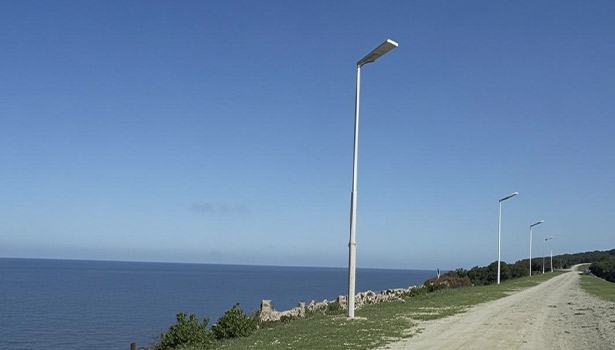
Installation of All-in-one Solar Street Lights
Determine the Installation Area
Conduct a site survey before installation to plan the spacing and location of Street lights based on lighting requirements. Generally, the spacing between Street lights on roads is 20–30 meters, which can be adjusted based on the power of the Street lights and the lighting range. Consider terrain and surrounding environment to achieve optimal lighting effects.
Examine Sunlight Exposure
Solar Street lights rely on sunlight, so observe and record sunlight exposure at the installation site for 3–5 consecutive days to understand the duration of sunlight, direct sunlight time, and any obstructions. If there are obstructions, adjust the position or remove the obstructions.
Check Assembly Instructions
Carefully read the manufacturer's installation manual to familiarize yourself with the Street light structure, installation steps, and precautions. Highlight complex operations such as controller settings and wiring connections, and consult the manufacturer's technical staff promptly if anything is unclear.
Prepare the Installation Area
Clear the site of debris and vegetation to ensure the ground is flat and firm. Dig a pit according to the lamp post foundation dimensions, and lay crushed stone or gravel at the bottom and compact it. Prepare tools and materials such as wrenches, screwdrivers, concrete, and bolts.
Install the Solar Street Lights
Light pole installation: Place the bottom of the light pole into the foundation pit, adjust the verticality, then secure the light pole with anchor bolts through the installation holes and temporarily fix with nuts.
Street light installation: Mount the integrated Street light at the top of the light pole, connect the wiring, and ensure good contact.
Controller Settings: Set the controller's operating mode and time parameters based on local sunrise and sunset times. Options include light-controlled or time-controlled modes.
Position the Solar Panels
Adjust the tilt angle of the solar panels according to the installation region's latitude. Generally, the angle should be close to the local latitude for optimal sunlight absorption. If the angle is adjustable, it can be adjusted with seasonal changes to improve charging efficiency.
Integrated LED solar street lights offer a new solution for outdoor lighting with their advantages of easy installation, excellent illumination, robust performance, and environmental friendliness and durability. In the current context of prominent energy and environmental issues, choosing them is a commitment to energy-saving living and an investment in sustainable development. Whether in urban construction or rural development, they can play an important role. We look forward to more people learning about and adopting integrated LED solar street lights to jointly promote the progress of green lighting initiatives.


